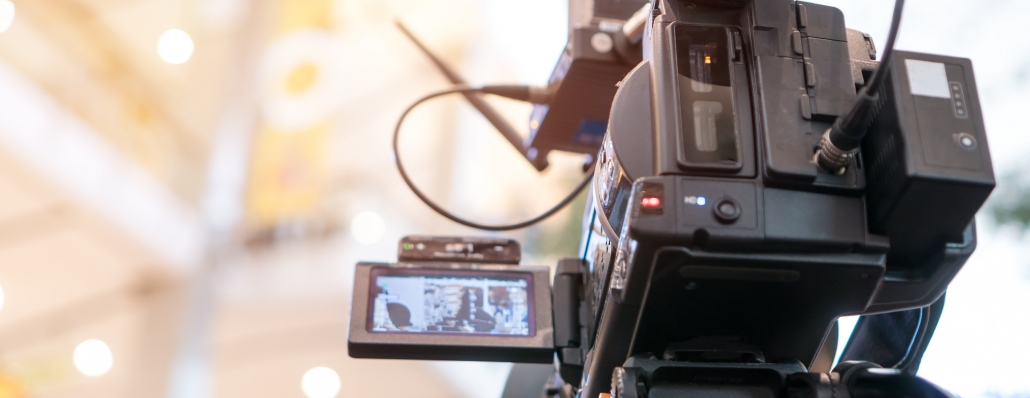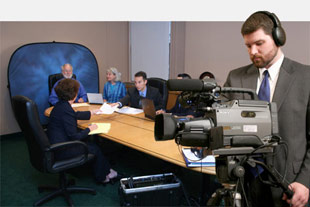How Legal Videography Enhances Precision in Court Procedures
How Legal Videography Enhances Precision in Court Procedures
Blog Article
Understanding the Significance of Videography in Legal Proceedings
The integration of videography right into lawful proceedings has actually emerged as a considerable factor in the presentation and analysis of evidence. By capturing visual components such as body language and face expressions, videography boosts the narrative surrounding witness testimonies and can greatly affect court perceptions.
Duty of Videography in Proof
Videography plays a significantly vital duty in legal proceedings, functioning as a powerful tool for providing evidence. The assimilation of video clip recordings into the lawful structure permits a more dynamic depiction of truths, allowing courts and jurors to envision events as they transpired. This aesthetic documentation can incorporate a variety of products, consisting of monitoring footage, taped witness testaments, and specialist presentations, all of which can significantly enhance the evidentiary landscape.
Among the primary benefits of videography is its ability to catch subtleties that might be lost in written accounts. Facial expressions, body movement, and situational context can provide essential understandings, helping to communicate emotions and purposes that text alone can not. The use of video clip proof cultivates a much more appealing courtroom experience, possibly helping jurors in recognizing complicated cases.
As modern technology advancements, the top quality and availability of videographic proof have actually improved, making it an essential component of modern legal methods. Courts progressively recognize the value of video as a dependable resource of details, prompting lawyers to adapt their methods for evidence presentation. Eventually, videography serves not only to illustrate facts yet also to enhance the overall integrity of the judicial process.

Enhancing Reliability and Quality
A significant advantage of including videography in legal procedures is its ability to boost both credibility and quality of evidence offered in court. Videographic evidence can record nuances that written documents might overlook, such as tone, body language, and context. This graph enables juries and judges to much better comprehend the situations bordering the case, thereby fostering an extra accurate understanding of the occasions concerned.

Additionally, the quality afforded by videography reduces the likelihood of misinterpretation that can develop from textual descriptions. This precision is particularly essential in intricate instances, where details can be quickly misconstrued. Eventually, by providing proof in a visually accessible style, videography not only enhances the honesty of the judicial procedure however also sustains enlightened decision-making by those associated with lawful proceedings.
Effect On Court Perception
The incorporation of videographic evidence dramatically influences court perception, typically resulting in much more engaged and notified deliberations. Jurors are normally extra responsive to visual information, which can enhance their understanding of complicated cases. Videography presents facts in a fashion that is both compelling and easily accessible, permitting jurors to connect with the proof on a more individual level.
Moreover, the capacity to witness occasions as they occurred can evoke psychological reactions that written transcripts or verbal testimonies may stop working to generate. This psychological involvement can lead jurors to develop more powerful viewpoints concerning the credibility of witnesses and the total story of the situation. The graph of evidence likewise helps in clarifying obscurities, making it less complicated for jurors to realize the context and significance of the information presented.
Additionally, videography can act Source as an effective tool for narration, allowing lawyers to create a convincing narrative that resonates with the jury. When jurors can visualize situations and witness key moments, their capability to purposeful attentively and get to an educated verdict is significantly enhanced, inevitably impacting the result of lawful process.
Finest Practices for Legal Videography
Implementing best practices in legal videography is necessary for ensuring that visual evidence is both effective and reliable in the courtroom. Choose certified professionals who specialize in lawful videography to make certain the technical top quality of the recordings. This includes utilizing high-resolution cameras and professional audio devices to record clear visuals and audio.
2nd, keep appropriate documentation throughout the recording process. This involves producing a thorough log that includes timestamps, summaries of the web content, and the identities of all individuals present. Such documents can bolster the authenticity of the video clip.

In addition, take into consideration the use of suitable editing methods. While it is critical to protect the initial web content, minor changes for quality-- such as boosting audio levels-- can enhance the overall presentation without modifying the substance.
Future Trends in Legal Videography
As legal videography proceeds to develop, emerging modern technologies and methods are shaping the future landscape of visual evidence in the court room (Legal Videography). One considerable fad is the integration of high-def and 4K video clip top quality, boosting the quality and information of videotaped statements and evidence. This improved resolution help jurors in adequately reviewing the integrity of witnesses and the subtleties of reference the here and now products
Furthermore, using man-made knowledge (AI) in video evaluation is getting traction. AI tools can help in recognizing crucial minutes in video, generating records, and also examining non-verbal interaction, which gives deeper understandings into witness reputation. Furthermore, virtual truth (VIRTUAL REALITY) and augmented reality (AR) are poised to change how proof exists, enabling jurors to immerse themselves in crime scenes or circumstances, consequently cultivating an extra profound understanding of the context.
Final Thought
In summary, videography works as a crucial tool in legal procedures, boosting the discussion of evidence and enhancing the total understanding of instances. By capturing non-verbal hints and bolstering the reliability of witness accounts, videography significantly influences court perception and decision-making processes - Legal Videography. Sticking to ideal practices makes sure the effectiveness of legal videography, while emerging patterns promise to additional augment its duty in the judicial system, inevitably fostering a much more educated and engaged legal environment
Videography plays an increasingly vital function in lawful process, offering as an effective tool for providing proof.A significant benefit of including videography in legal procedures is its capability to enhance both reliability and clearness of proof offered in court. Eventually, by providing evidence in a visually available format, videography not just reinforces the honesty of the judicial procedure however likewise supports informed decision-making by those entailed in lawful proceedings.
In summary, videography offers as an indispensable tool in legal process, enhancing the presentation of evidence and improving the total understanding of instances. Legal Videography. Sticking to ideal techniques guarantees the efficiency of legal videography, while emerging trends promise to further increase its function in the judicial system, eventually fostering a much more informed and involved legal environment
Report this page